20 Fascinating Historical Photos That Will Cure Your Ignorance
Kenneth Coo
Published
10/10/2017
in
wow
Learning about the past, no matter how painful, might stop us from repeating our mistakes.
- List View
- Player View
- Grid View
Advertisement
-
1.
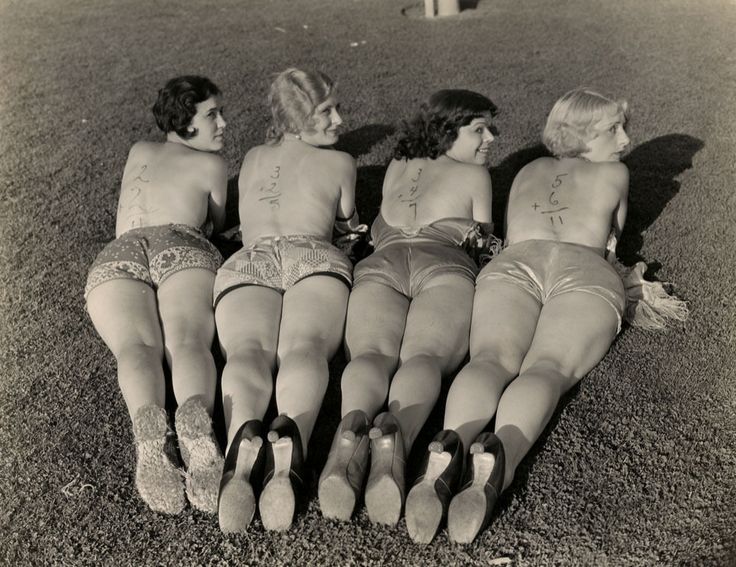 Bathing pinup girls pose somewhere in the US in 1926. Such pictures became more prevalent in the US around WWI, and would be heavily used through WWII.
Bathing pinup girls pose somewhere in the US in 1926. Such pictures became more prevalent in the US around WWI, and would be heavily used through WWII. -
2.
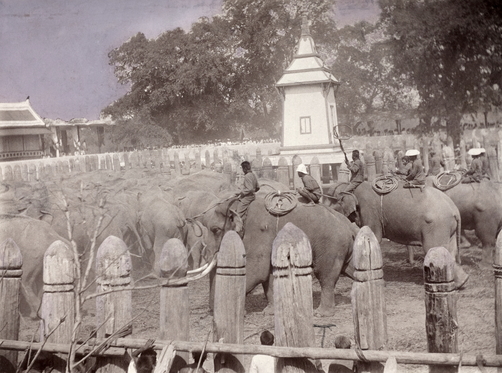 Herders put elephants in a pen during the Ayutthaya Wild Elephant Collection in Thailand in 1904. The government was able to capture a few thousand elephants and trained them and put them to use for projects, eventually moving some into sanctuaries as well.
Herders put elephants in a pen during the Ayutthaya Wild Elephant Collection in Thailand in 1904. The government was able to capture a few thousand elephants and trained them and put them to use for projects, eventually moving some into sanctuaries as well. -
3.
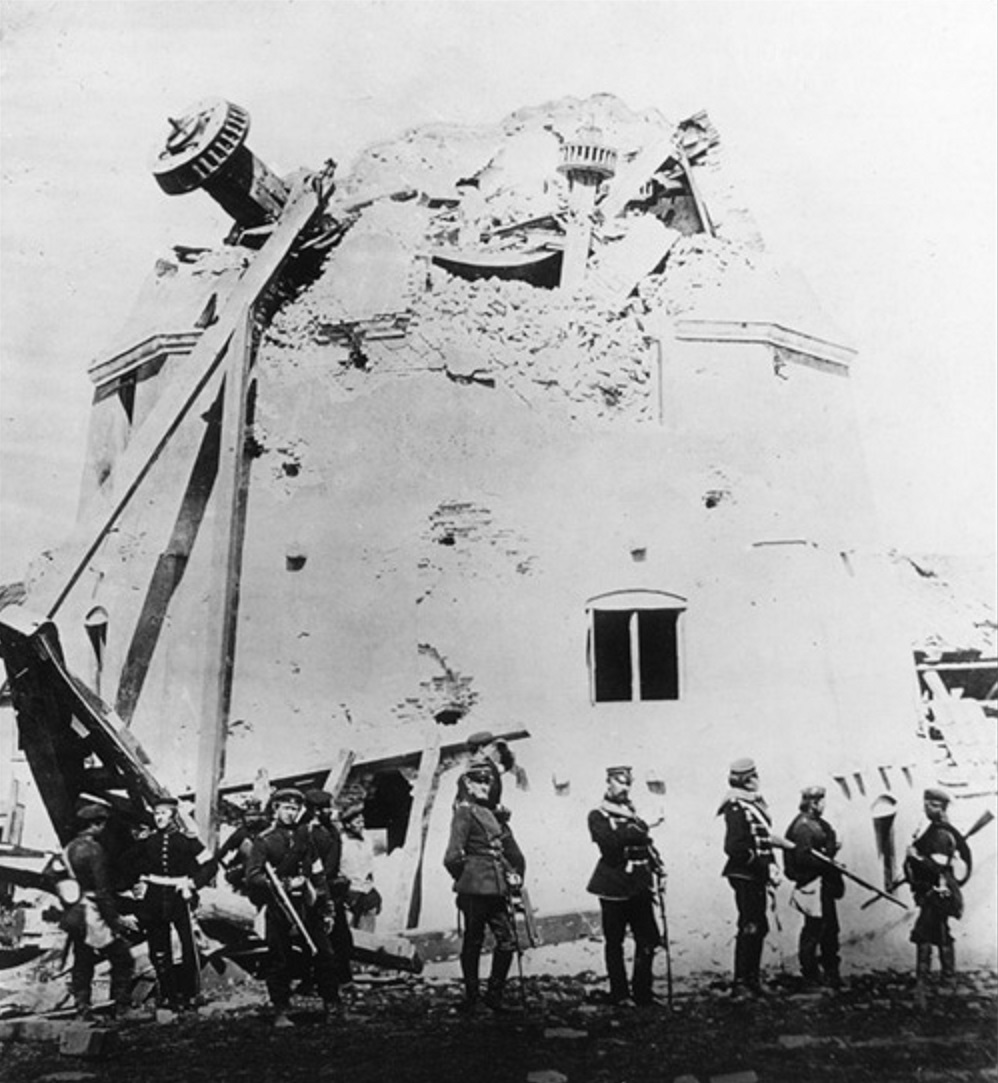 Prussian soldiers pose in front of a destroyed fort during the Prussian-Danish War in 1864. The war lasted less than a year with a Prussian victory with the help of Austria.
Prussian soldiers pose in front of a destroyed fort during the Prussian-Danish War in 1864. The war lasted less than a year with a Prussian victory with the help of Austria. -
4.
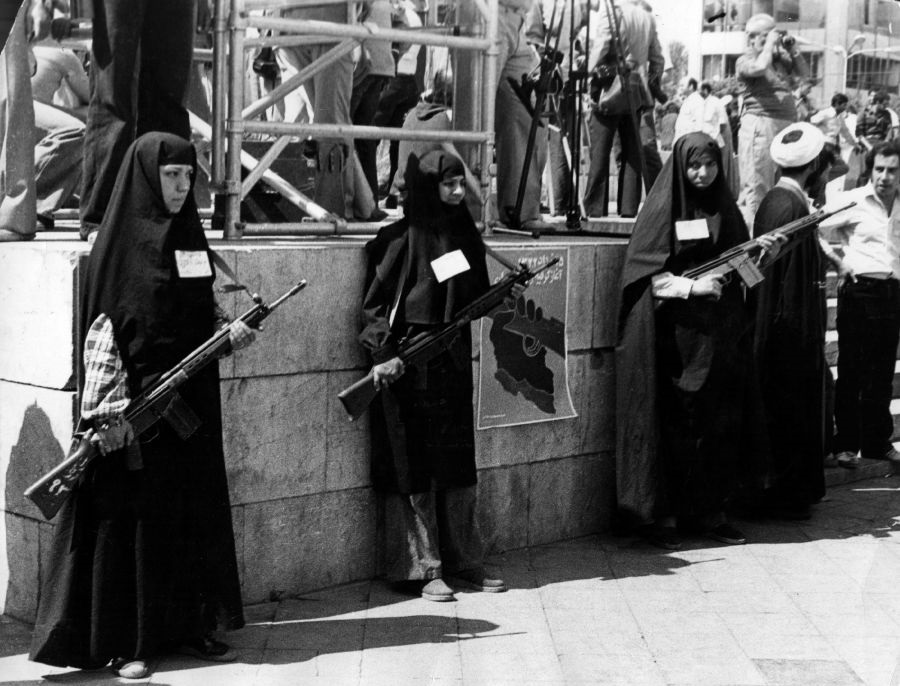 Armed women guard a section of the main square in Tehran, Iran in 1979. This was during the Iranian Revolution, in which many women not only supported it, but participated in the armed takeovers of certain areas not knowing what it will mean for them and their rights.
Armed women guard a section of the main square in Tehran, Iran in 1979. This was during the Iranian Revolution, in which many women not only supported it, but participated in the armed takeovers of certain areas not knowing what it will mean for them and their rights. -
5.
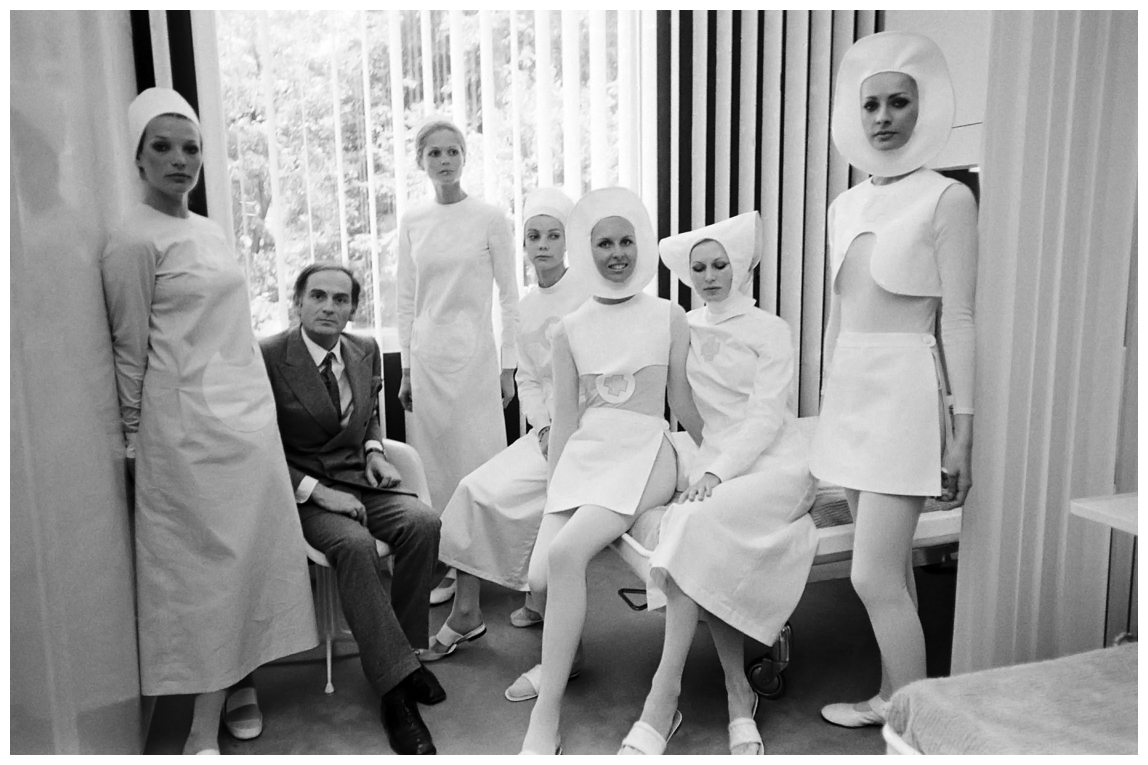 Fashion designer Pierre Cardin posing with Models in his "futuristic" vision of nursing uniforms in Paris, France in 1970.
Fashion designer Pierre Cardin posing with Models in his "futuristic" vision of nursing uniforms in Paris, France in 1970. -
6.
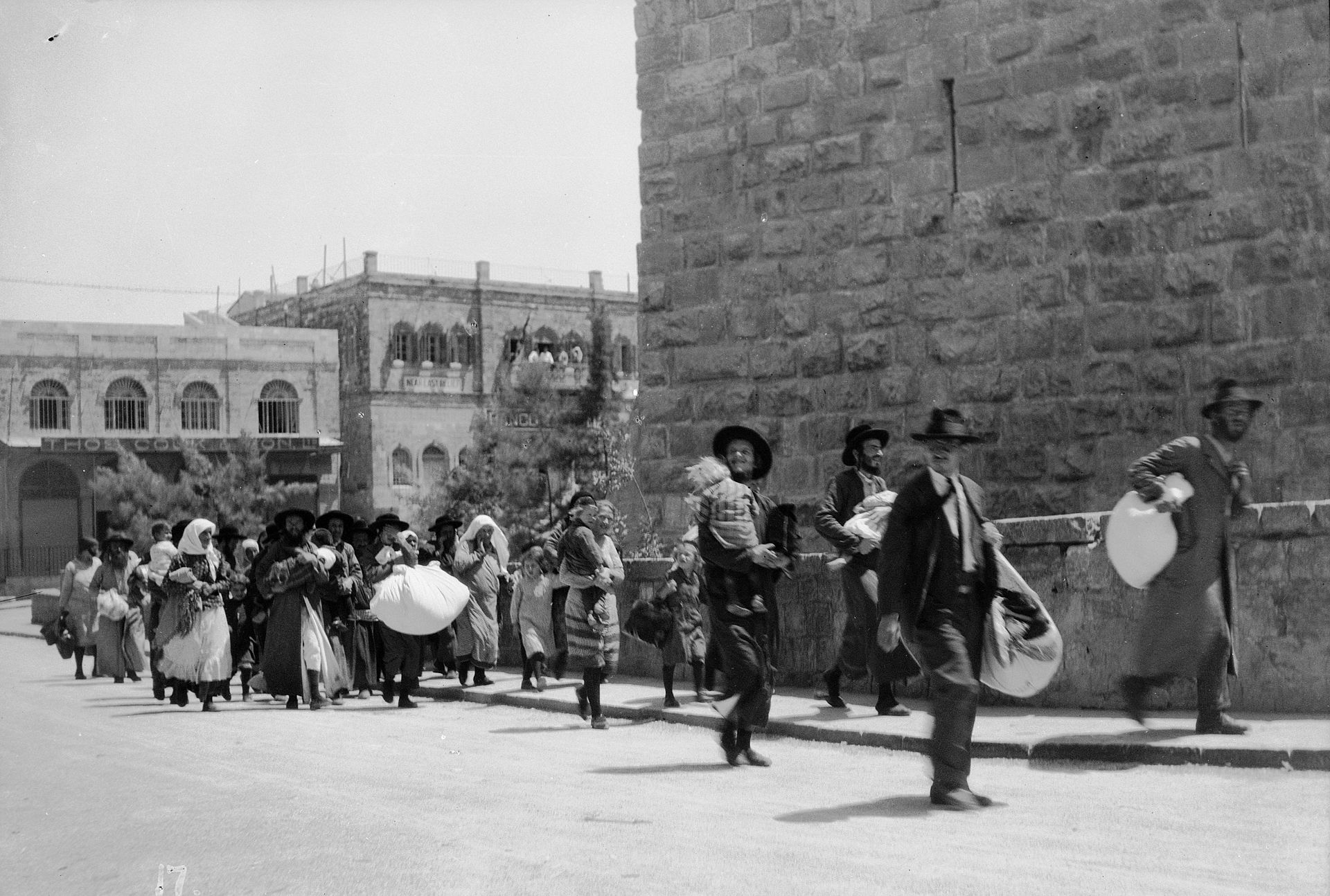 Jewish families fleeing the old city of Jerusalem during the Palestine Riots of 1929. This was when Britain had control of the area. The Muslims and the Jews had long standing conflicts over the sacred Western Wall, and demonstrations turned to violence. The Muslims simply attacked the Jews, and began to massacre them. 133 Jews were killed and another 339 others were injured in the attacks. Thousands fled the violence. The British troops moved in to quell the riots, and more violence occurred. In the fighting, the British killed around 110 Arabs and another 232 were injured.
Jewish families fleeing the old city of Jerusalem during the Palestine Riots of 1929. This was when Britain had control of the area. The Muslims and the Jews had long standing conflicts over the sacred Western Wall, and demonstrations turned to violence. The Muslims simply attacked the Jews, and began to massacre them. 133 Jews were killed and another 339 others were injured in the attacks. Thousands fled the violence. The British troops moved in to quell the riots, and more violence occurred. In the fighting, the British killed around 110 Arabs and another 232 were injured. -
7.
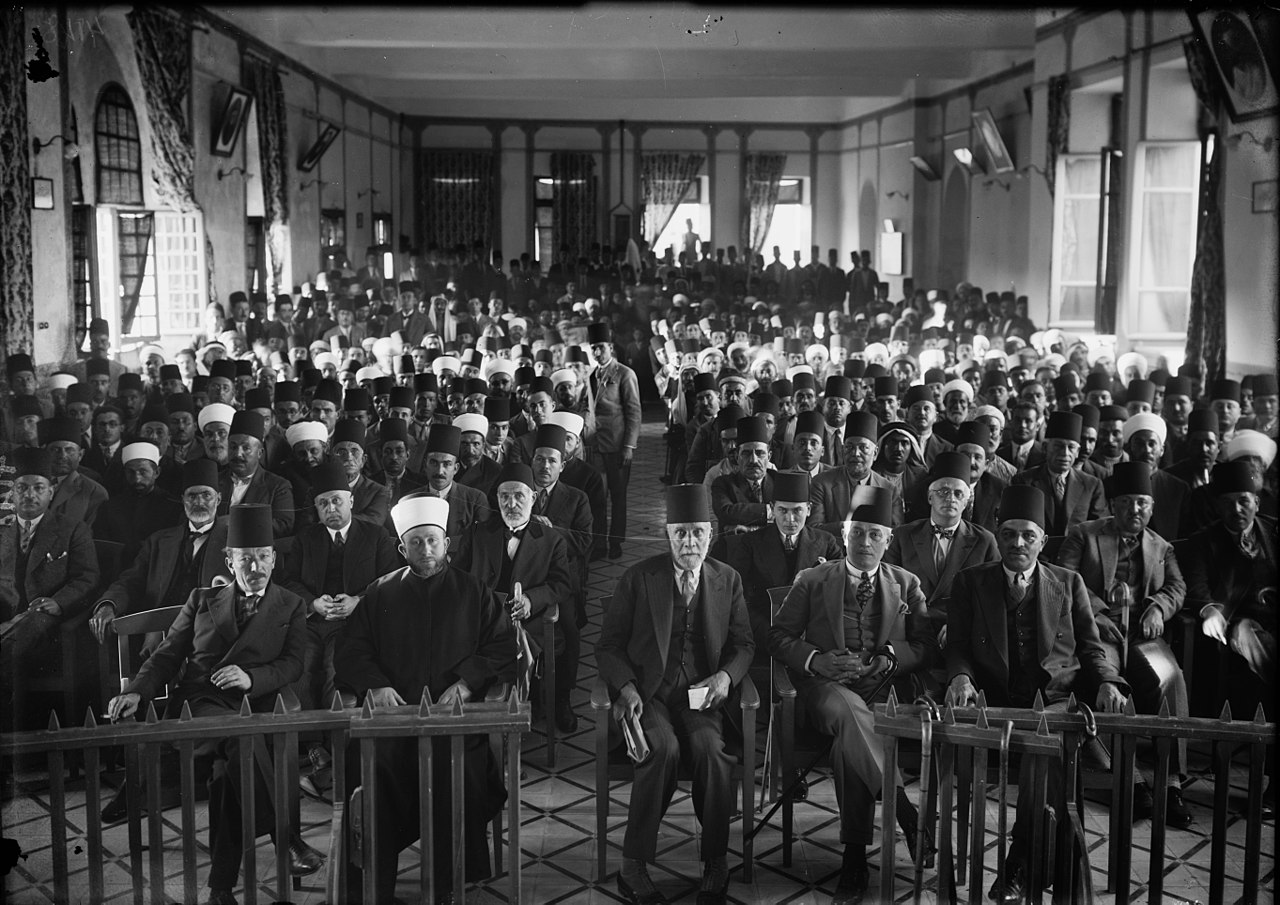 Gathering of Arab locals who would discuss how to handle the Jews, 1928. A year later, it escalated into the violence showen in the picture before. The rioters destroyed homes, synagogues, sacred Jewish items and ancient texts, and forcing 17 full Jewish communities to abandon their homes. The rioting took a week, and it's safe to assume many in the picture either orchestrated or took part as these were many of the key leaders of anti-Jewish demonstrations.
Gathering of Arab locals who would discuss how to handle the Jews, 1928. A year later, it escalated into the violence showen in the picture before. The rioters destroyed homes, synagogues, sacred Jewish items and ancient texts, and forcing 17 full Jewish communities to abandon their homes. The rioting took a week, and it's safe to assume many in the picture either orchestrated or took part as these were many of the key leaders of anti-Jewish demonstrations. -
8.
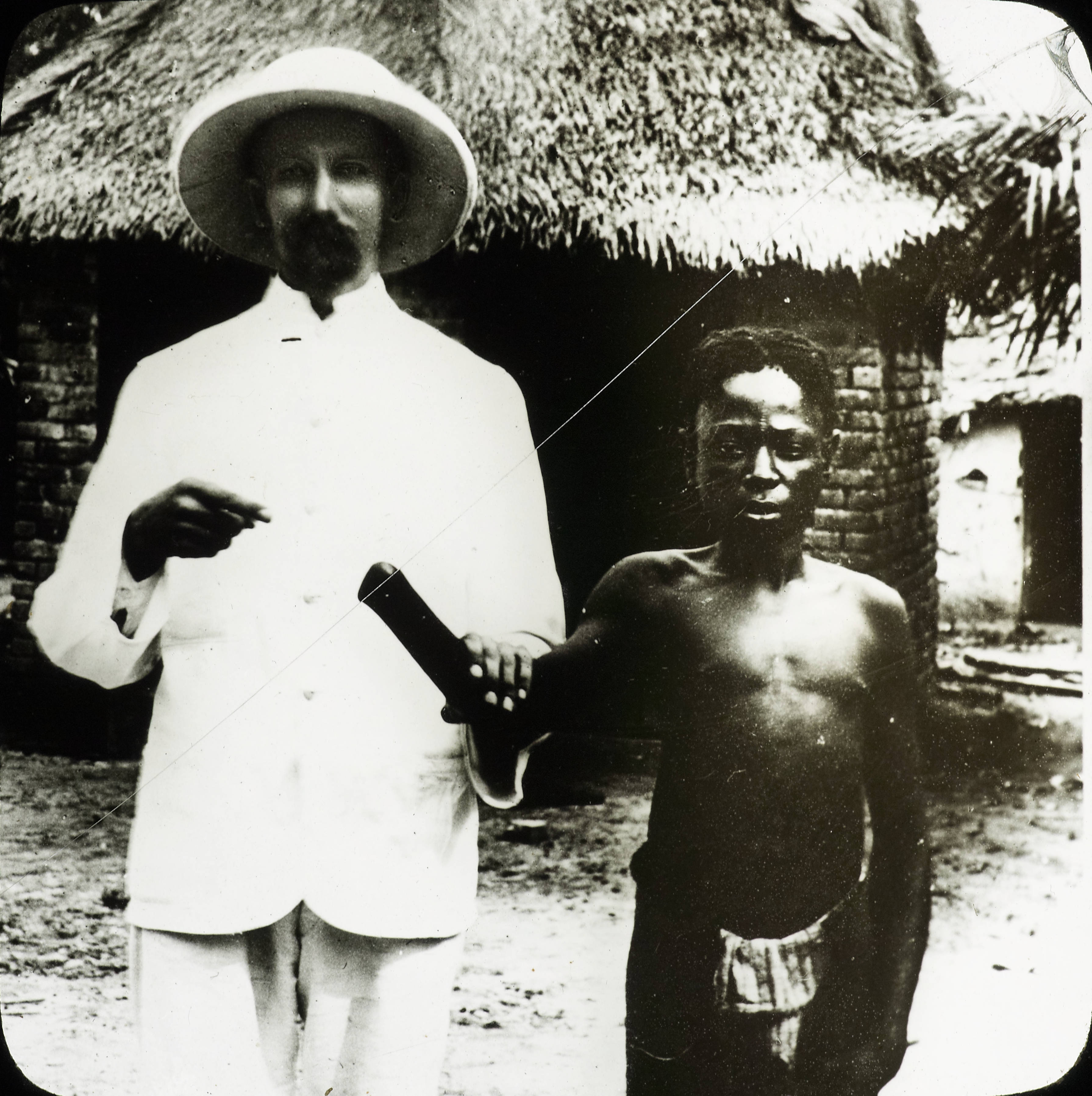 A missionary holds up the arm of a Congolese boy showing his hand has been severed in Belgian Congo in the 1890s. It was cut off by the Belgian militia (basically mercenaries) working for King Leopold II of Belgium when the father of the boy failed to meet a work quota. The Belgian Congo was privately owned and operated by King Leopold II himself. During this time, he basically enslaved the population, selling people and forcing hard labor to pay off the Kings debts. He hid much of this from his own people, hiring many mercenaries and men from around Europe with no rules on how to police the territory. Severed hands even were a form of currency in Belgian Congo by the militia. The Belgian militia would cut hands off, force long days of endless work, sell Congolese as slaves at times, rape the women, steal from everybody, and all with the blessing of the King. It was a dark and ugly time for the area which lasted almost 25 years right up until the King relinquished control of the country in 1908.
A missionary holds up the arm of a Congolese boy showing his hand has been severed in Belgian Congo in the 1890s. It was cut off by the Belgian militia (basically mercenaries) working for King Leopold II of Belgium when the father of the boy failed to meet a work quota. The Belgian Congo was privately owned and operated by King Leopold II himself. During this time, he basically enslaved the population, selling people and forcing hard labor to pay off the Kings debts. He hid much of this from his own people, hiring many mercenaries and men from around Europe with no rules on how to police the territory. Severed hands even were a form of currency in Belgian Congo by the militia. The Belgian militia would cut hands off, force long days of endless work, sell Congolese as slaves at times, rape the women, steal from everybody, and all with the blessing of the King. It was a dark and ugly time for the area which lasted almost 25 years right up until the King relinquished control of the country in 1908. -
9.
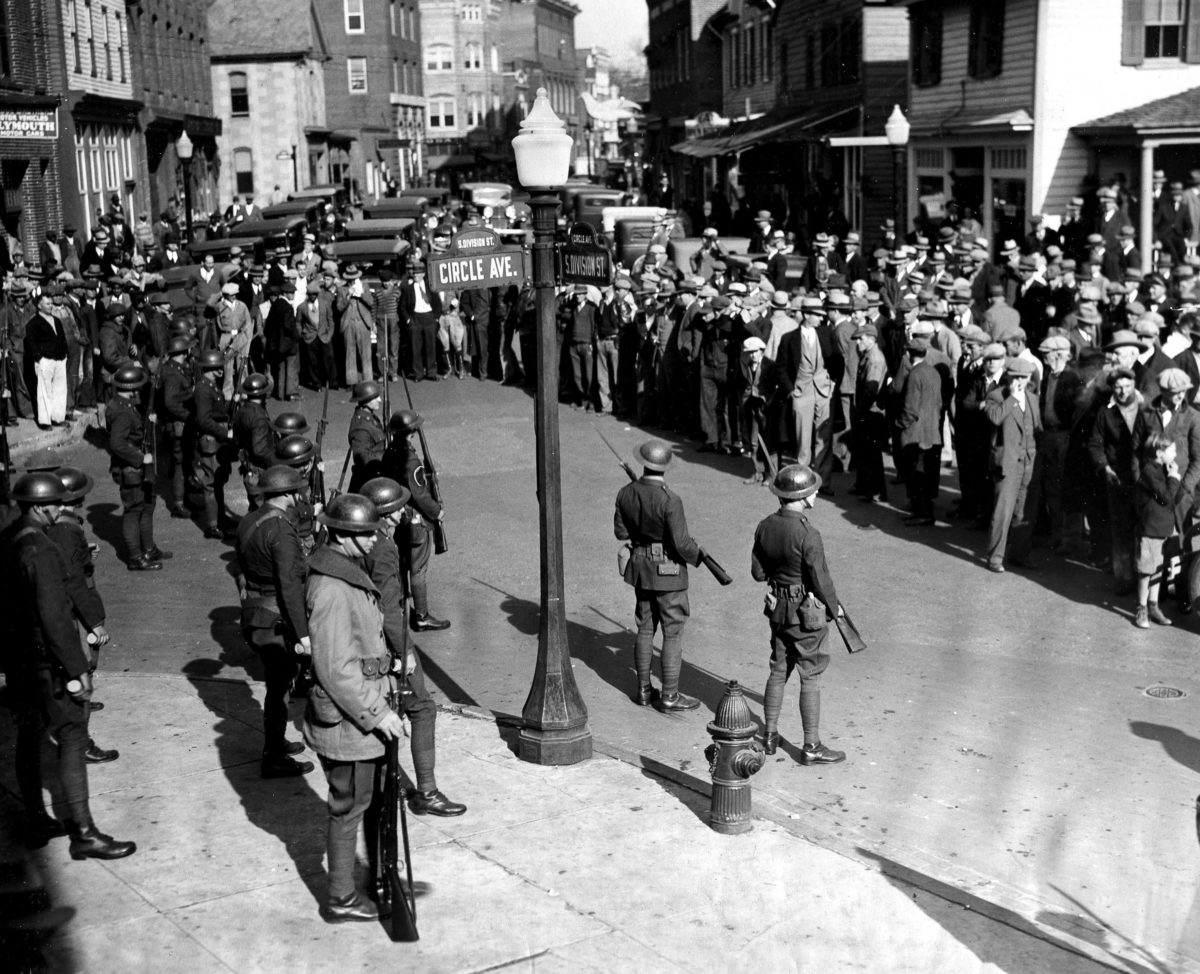 State Troopers keep a crowd in check in Salisbury, Maryland, US in 1933. The troopers were sent by Gov. Albert Ritchie to arrest suspects in a lynching of a black man that occurred in the previous month. The Lynching of blacks without due process in the area had risen in previous years, and the Governor intended to put a stop to it. However, the troopers were met by large crowds of white people who actually threatened the troopers, throwing rocks and some were said to be armed with clubs and bats. After initial clashes, the troopers used tear gas to repulse them. Most Americans always attribute the heavy racism and specifically lynchings solely to former slave states deep in the South of the US, but sadly, this is simply not true.
State Troopers keep a crowd in check in Salisbury, Maryland, US in 1933. The troopers were sent by Gov. Albert Ritchie to arrest suspects in a lynching of a black man that occurred in the previous month. The Lynching of blacks without due process in the area had risen in previous years, and the Governor intended to put a stop to it. However, the troopers were met by large crowds of white people who actually threatened the troopers, throwing rocks and some were said to be armed with clubs and bats. After initial clashes, the troopers used tear gas to repulse them. Most Americans always attribute the heavy racism and specifically lynchings solely to former slave states deep in the South of the US, but sadly, this is simply not true. -
10.
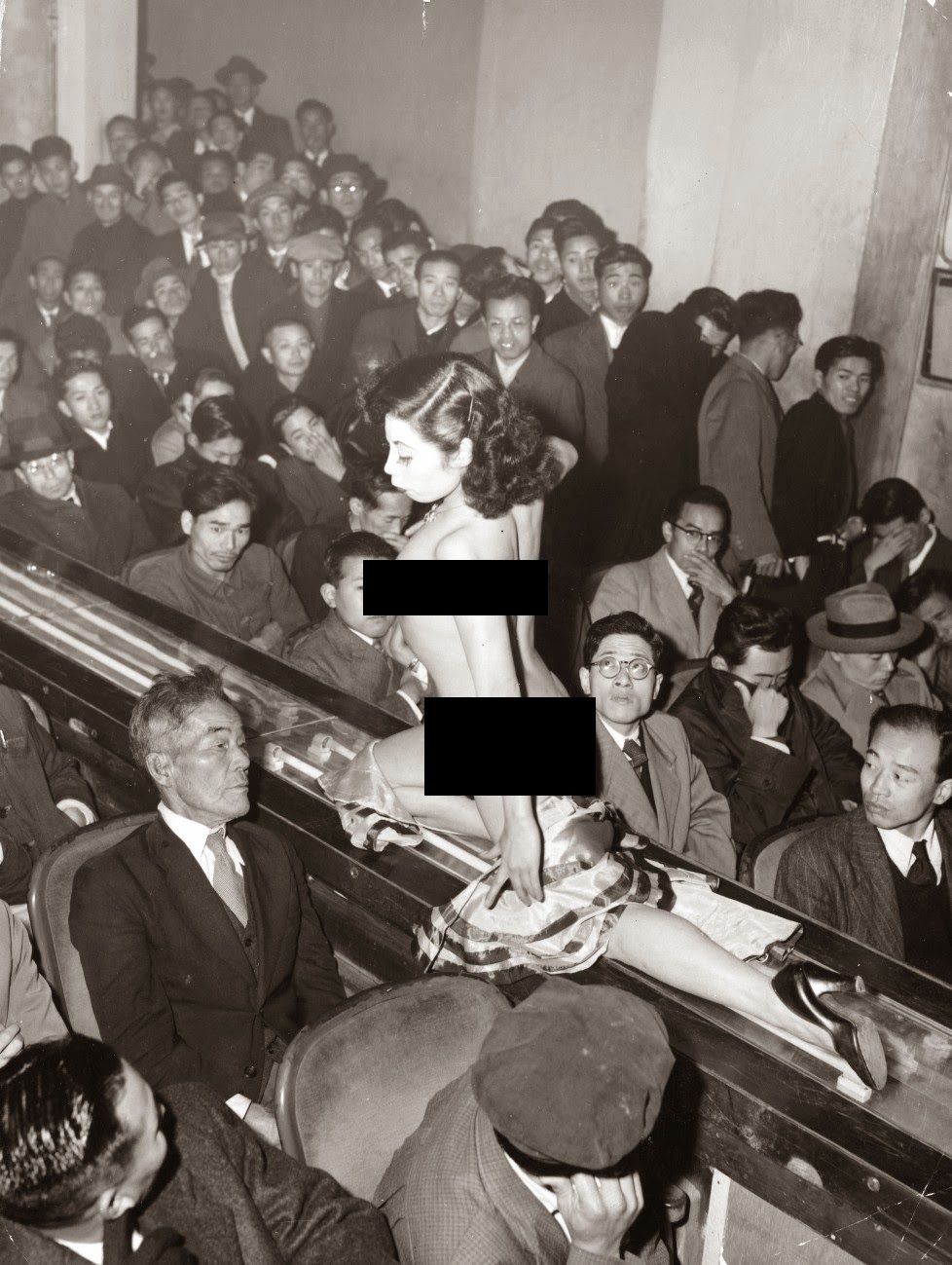 A stripper at a striptease show is taken past the audience on a moving conveyor belt in Tokyo, Japan in 1957. After WWII, Japanese culture opened up immensely. Everything from cars to electronics to unique ways of sexual gratification engulfed the populace, expanding them into world leaders in each category by the late 1970s.
A stripper at a striptease show is taken past the audience on a moving conveyor belt in Tokyo, Japan in 1957. After WWII, Japanese culture opened up immensely. Everything from cars to electronics to unique ways of sexual gratification engulfed the populace, expanding them into world leaders in each category by the late 1970s. -
11.
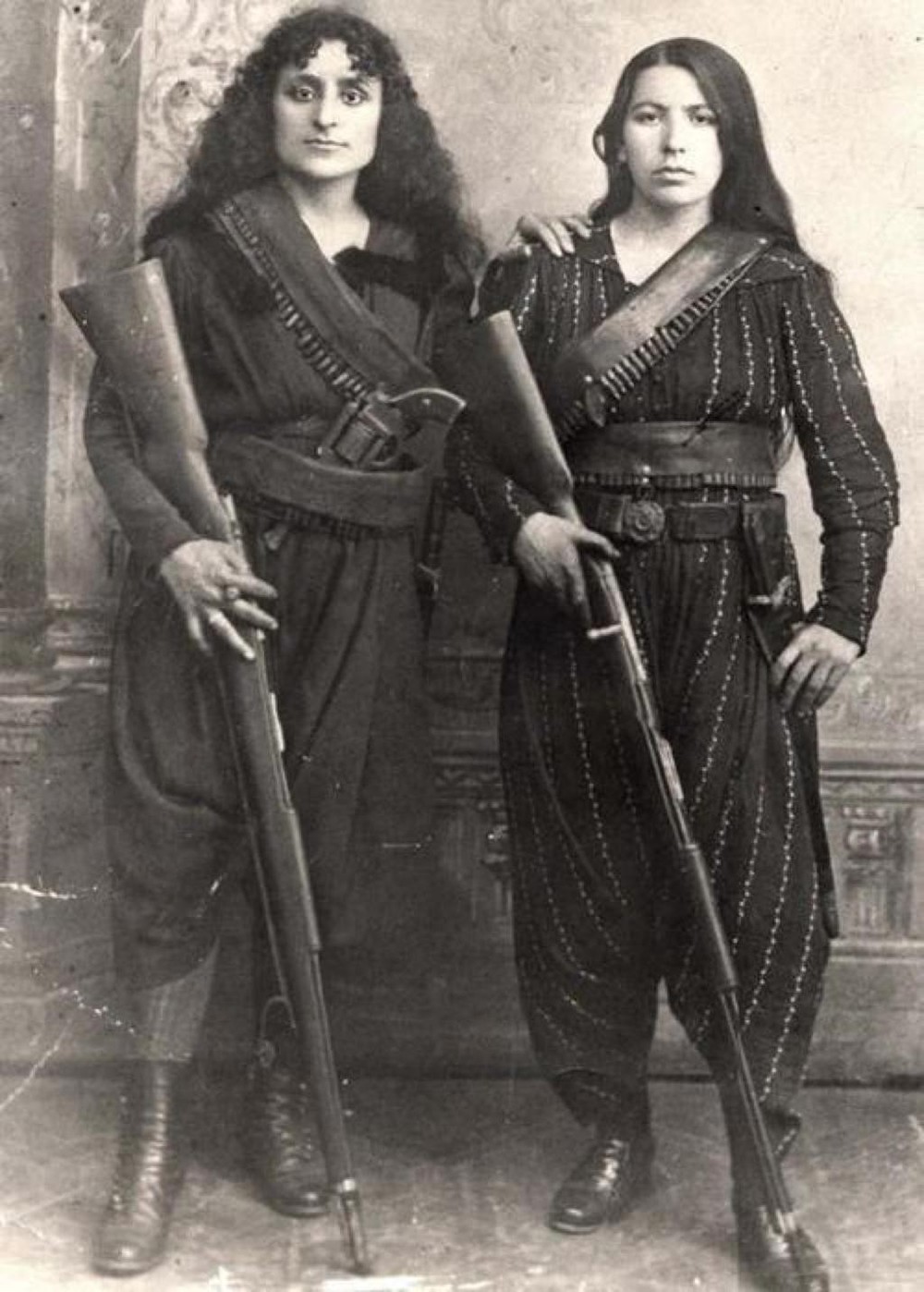 2 Armenian women fighters pose for a picture during the time of the Hamidian Massacres in Armenia in 1895. The Ottoman Turks began massive executions of Armenians, killing up to 300,000 of them over 3 years before it stopped. Men, women, children, the Ottomans did not spare anyone. Fighters such as the women above and the resistance tried to fight back, but was not able to stop the massacres. The Ottoman Empire was reorganizing at the time, and they decided to crack down on the Armenians in particular in an effort to destroy them.
2 Armenian women fighters pose for a picture during the time of the Hamidian Massacres in Armenia in 1895. The Ottoman Turks began massive executions of Armenians, killing up to 300,000 of them over 3 years before it stopped. Men, women, children, the Ottomans did not spare anyone. Fighters such as the women above and the resistance tried to fight back, but was not able to stop the massacres. The Ottoman Empire was reorganizing at the time, and they decided to crack down on the Armenians in particular in an effort to destroy them. -
12.
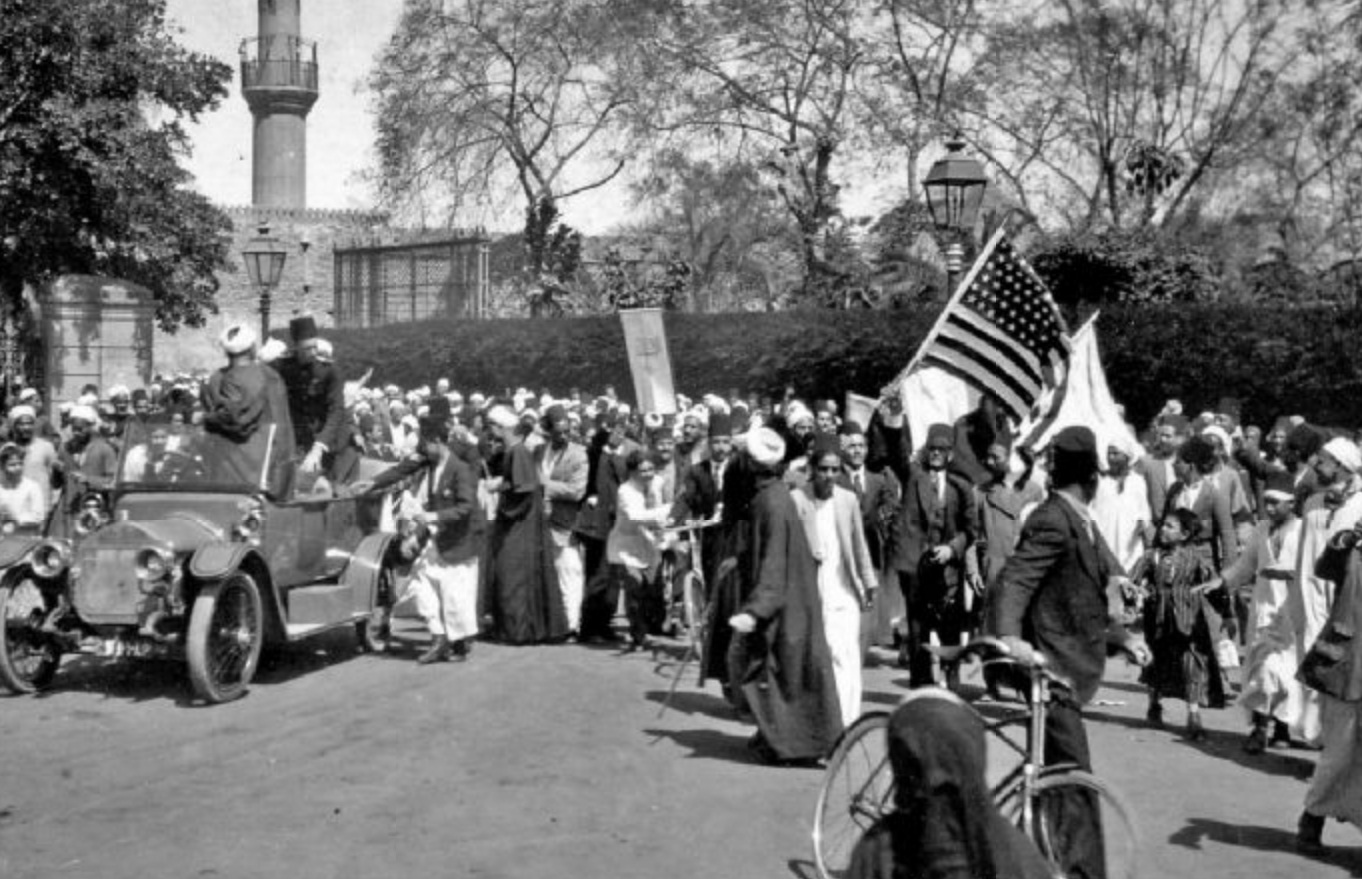 A man waves the American flag in Cairo, Egypt in 1919. This was during the Egyptian Revolution against British control of Egypt and Sudan. The Egyptians sought American support for their independence, which the US refused. Clashes caused the death of 800+ Egyptians, and another 1600 wounded. Around 30 British solders were killed. In other attacks, another 30 or so European citizens were also killed in the fighting by Egyptian mobs. To resolve the issue, the British recognized the Egyptian Independence, but did not remove troops from either Egypt or Sudan. They would remain all the way through WWII and after, in force, but allow the Egyptians to create their own government and police themselves in a way. Sudan was not allowed any kind of independence until both Sudan and Egypt were completely independent of any British influence in the revolutions of 1956.
A man waves the American flag in Cairo, Egypt in 1919. This was during the Egyptian Revolution against British control of Egypt and Sudan. The Egyptians sought American support for their independence, which the US refused. Clashes caused the death of 800+ Egyptians, and another 1600 wounded. Around 30 British solders were killed. In other attacks, another 30 or so European citizens were also killed in the fighting by Egyptian mobs. To resolve the issue, the British recognized the Egyptian Independence, but did not remove troops from either Egypt or Sudan. They would remain all the way through WWII and after, in force, but allow the Egyptians to create their own government and police themselves in a way. Sudan was not allowed any kind of independence until both Sudan and Egypt were completely independent of any British influence in the revolutions of 1956. -
13.
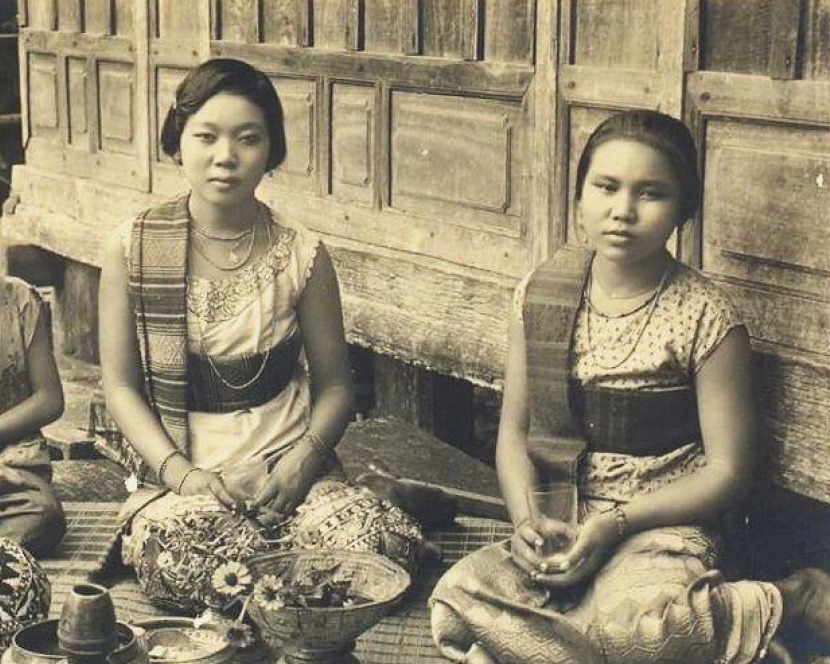 Some ladies pose for a picture in Nong Kai, Thailand in 1923. The upper class and European settlers in Indochina created a massive class gap between the rich and poor. Such things led to rebellion, which was sidelined during WWII as both sides had a common enemy in Japan, but went into full blown wars against the French and then Americans afterwards.
Some ladies pose for a picture in Nong Kai, Thailand in 1923. The upper class and European settlers in Indochina created a massive class gap between the rich and poor. Such things led to rebellion, which was sidelined during WWII as both sides had a common enemy in Japan, but went into full blown wars against the French and then Americans afterwards. -
14.
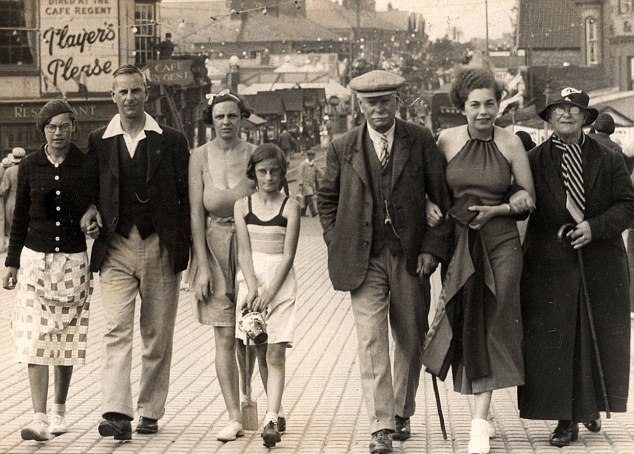 Two families walk the promenade in Mablethorpe, Lincolnshire, England in 1935. This picture is in some British fashion libraries to show the drastic change of fashion from generation to generation of that time period.
Two families walk the promenade in Mablethorpe, Lincolnshire, England in 1935. This picture is in some British fashion libraries to show the drastic change of fashion from generation to generation of that time period. -
15.
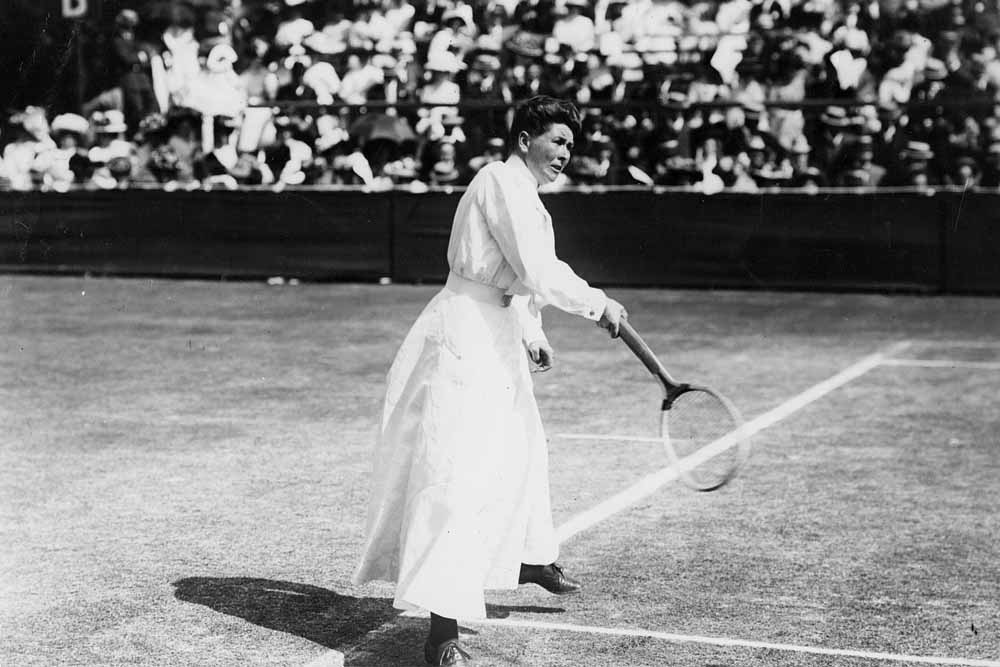 Charlotte Cooper from the UK participating in the first Olympic games that allowed women in Paris, France in 1900. She would go on to be the first women Gold Medalist for tennis. No special shoes or clothes existed for most olympic events, but definitely not for women during the time period. So all female Olympic athletes competed in normal attire in Tennis and Golf in particular.
Charlotte Cooper from the UK participating in the first Olympic games that allowed women in Paris, France in 1900. She would go on to be the first women Gold Medalist for tennis. No special shoes or clothes existed for most olympic events, but definitely not for women during the time period. So all female Olympic athletes competed in normal attire in Tennis and Golf in particular. -
16.
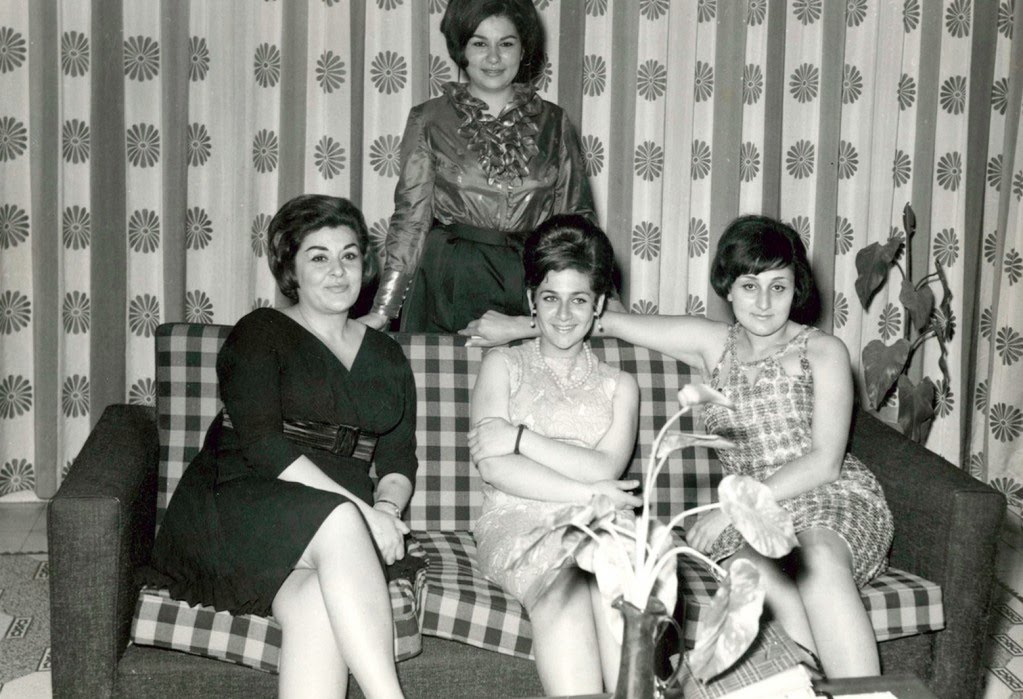 The Saudi Arabian fashion designer, Parveen Shaath, seated left on the couch, with her friends in Riyadh, Saudi Arabia in the 1960s. Before the harsh laws imposed on women in Saudi Arabia in the 1980s, women had an open forum for thought and art.
The Saudi Arabian fashion designer, Parveen Shaath, seated left on the couch, with her friends in Riyadh, Saudi Arabia in the 1960s. Before the harsh laws imposed on women in Saudi Arabia in the 1980s, women had an open forum for thought and art. -
17.
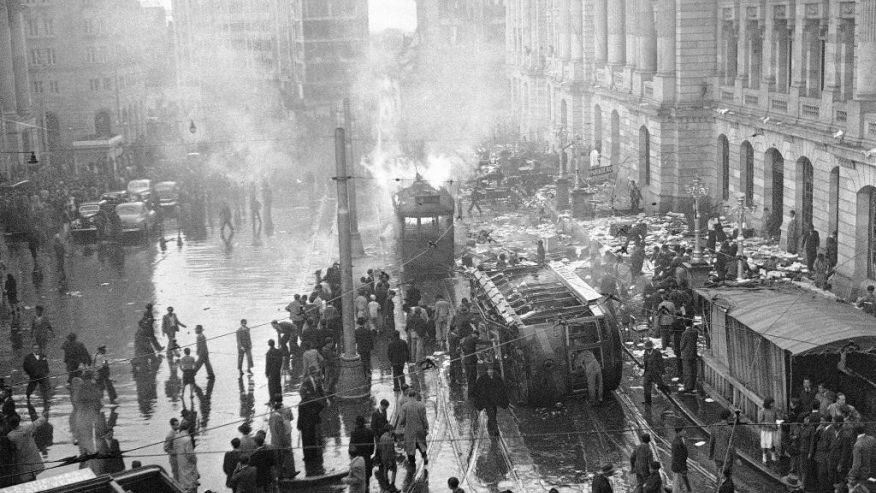 People review the damage caused by massive riots in Bogota, Colombia in 1948. This was known as El Bogotazo which happened after the assassination of Liberal leader and presidential candidate Jorge Eliécer Gaitán. The 10 hour riot destroyed much of the city. Colombia had been at odds over political control of the country for nearly 20 years before this event. Following the assassination, another period known as La Violencia ("The Violence") lasted until 1956.
People review the damage caused by massive riots in Bogota, Colombia in 1948. This was known as El Bogotazo which happened after the assassination of Liberal leader and presidential candidate Jorge Eliécer Gaitán. The 10 hour riot destroyed much of the city. Colombia had been at odds over political control of the country for nearly 20 years before this event. Following the assassination, another period known as La Violencia ("The Violence") lasted until 1956. -
18.
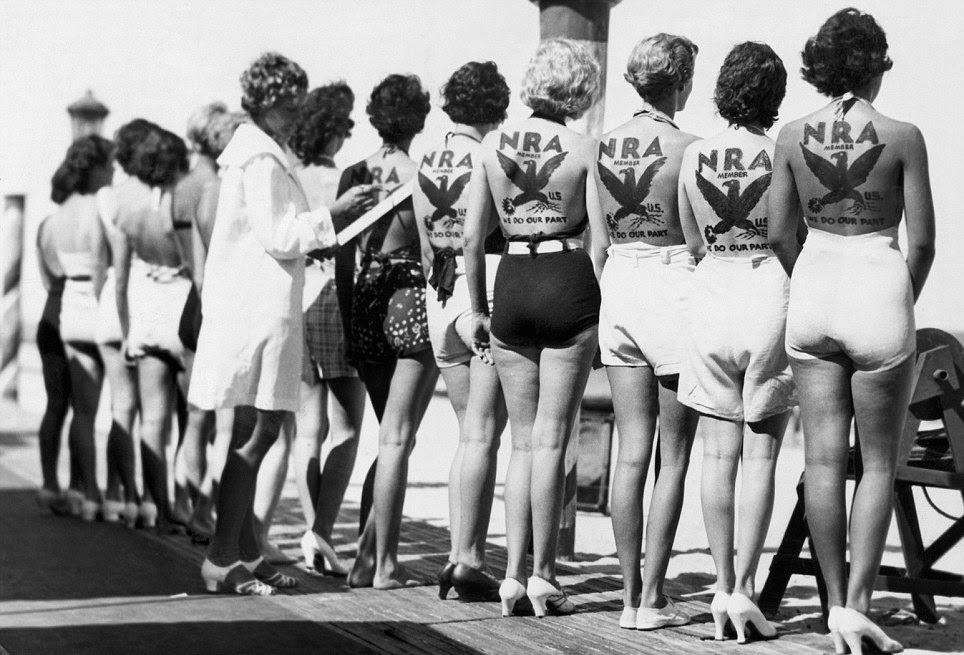 A beauty pageant in Miami, Florida, US in the 1930s. 6 of the participants have been paid to have large temporary tattoos promoting the NRA on their backs. This practice of advertising in incredibly old. Even Roman gladiators 2000 years ago would promote local shops before fights either verbally or with markings on their armor.
A beauty pageant in Miami, Florida, US in the 1930s. 6 of the participants have been paid to have large temporary tattoos promoting the NRA on their backs. This practice of advertising in incredibly old. Even Roman gladiators 2000 years ago would promote local shops before fights either verbally or with markings on their armor. -
19.
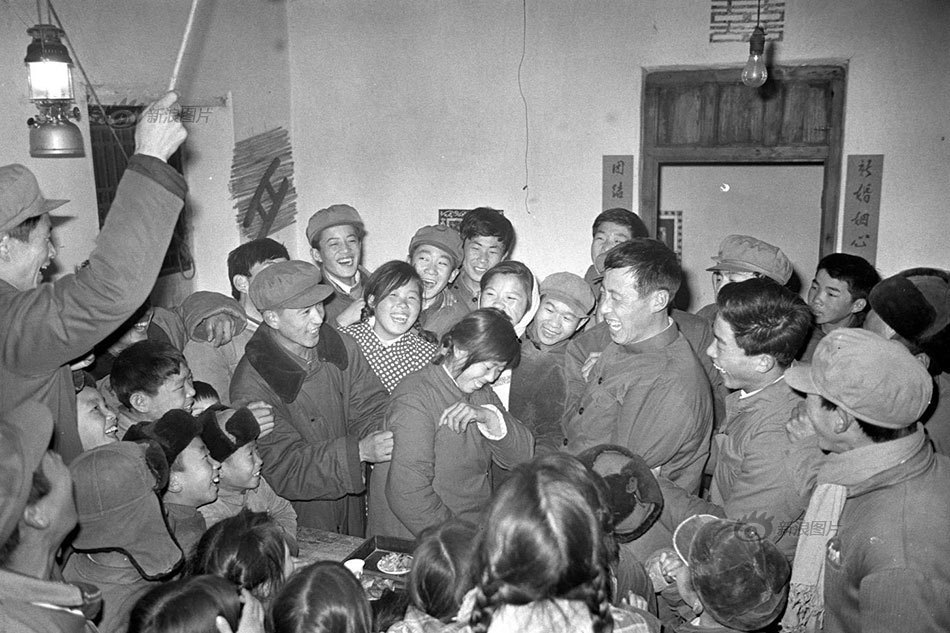 A wedding ceremony in Changyi county, Shandong province, China in 1980. Most ceremonies of the time in China did not have fancy gowns or some ridiculously lavished event. They usually got together at the home of the bride or groom, and shared in the moment.
A wedding ceremony in Changyi county, Shandong province, China in 1980. Most ceremonies of the time in China did not have fancy gowns or some ridiculously lavished event. They usually got together at the home of the bride or groom, and shared in the moment. -
20.
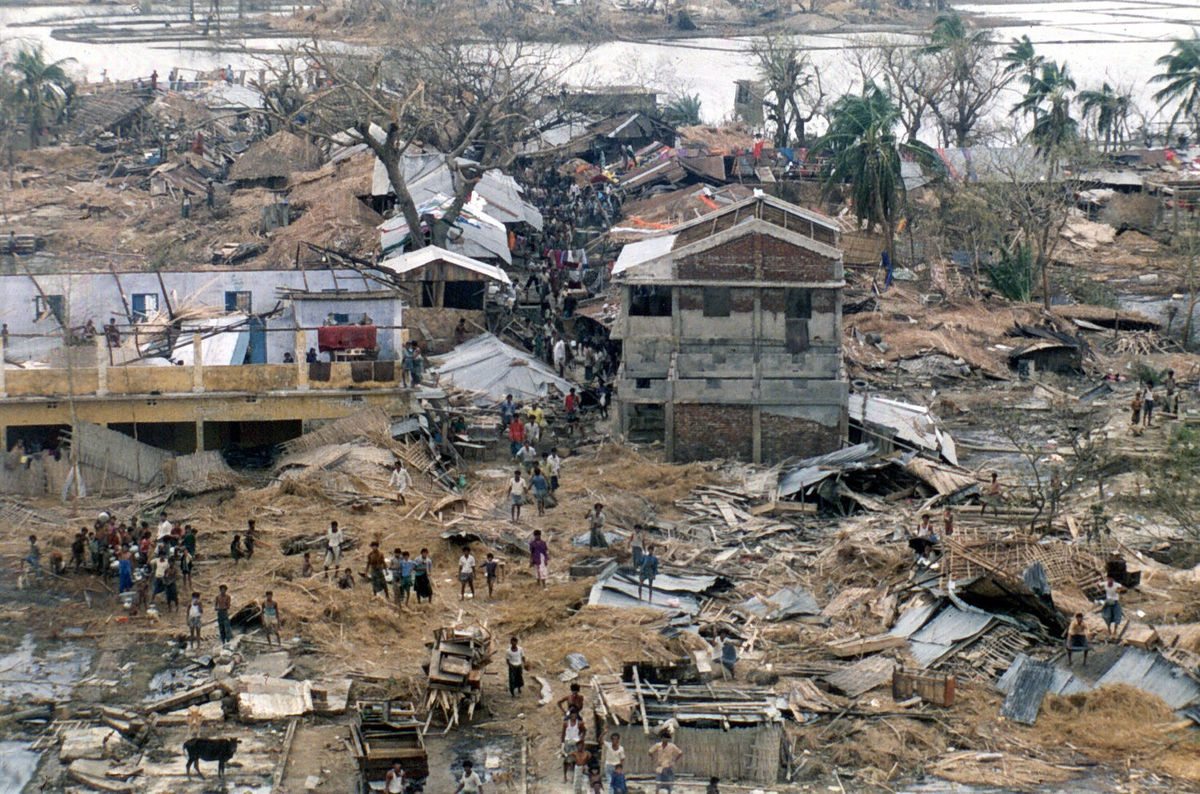 Residents survey the damage caused by a cyclone in Bangladesh in 1991. When the cyclones gain strength, the devastation they cause on India, Bangladesh and surrounding countries is horrible. This horrific storm killed nearly 150,000 people. It took weeks for the flooded areas to drain and recede, and months to clear up all the bodies of people and livestock. It took years to remove all the debris and rebuild everything. Due to the Indian Ocean formations of cyclones and the current state of the people living in potential paths of one, it maybe only a matter of time before another truly brutal storm hits them.
Residents survey the damage caused by a cyclone in Bangladesh in 1991. When the cyclones gain strength, the devastation they cause on India, Bangladesh and surrounding countries is horrible. This horrific storm killed nearly 150,000 people. It took weeks for the flooded areas to drain and recede, and months to clear up all the bodies of people and livestock. It took years to remove all the debris and rebuild everything. Due to the Indian Ocean formations of cyclones and the current state of the people living in potential paths of one, it maybe only a matter of time before another truly brutal storm hits them.
- NEXT GALLERY
-
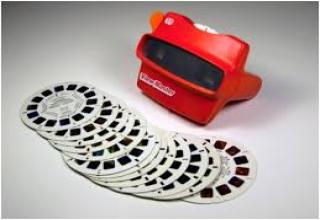
- Back to the 90s
Bathing pinup girls pose somewhere in the US in 1926. Such pictures became more prevalent in the US around WWI, and would be heavily used through WWII.
20/20
1/20
Categories:
Wow


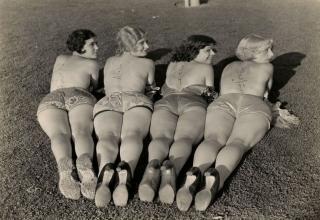
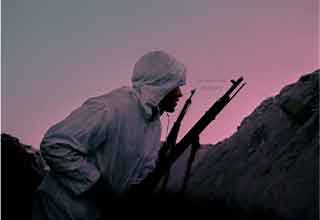




0 Comments